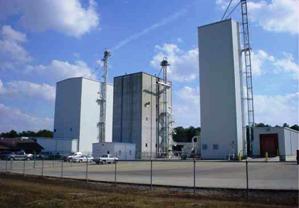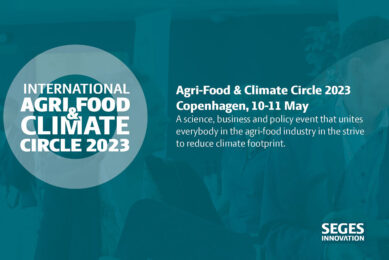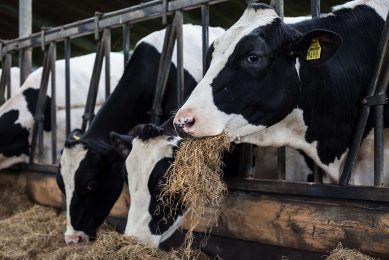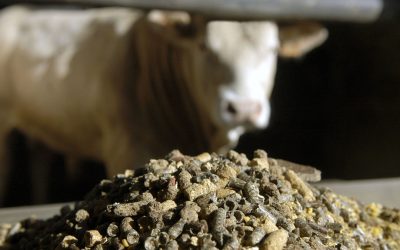Aviagen, the world’s leading poultry breeding company, completed a multi-million dollar expansion of its feed mill in June of 2010. The expansion added production capacity with new equipment and procedures that ensure the biosecurity of pelletised and crumbled feed for Aviagen’s Pedigree operation in Tennessee and for 115 Aviagen poultry farms in Alabama.
New equipment, including a state-of-theart conditioning and a long-term retention vessel which helps the company increase its output while maintaining the strictest biosecurity controls, is a vital part of ensuring that the feed used in Aviagen’s breeding program is free of harmful pathogens. That, however, is only the beginning. By reducing its consumption of electricity, natural gas and diesel fuel, the modernised feed mill also has cut its annual energy costs by almost $170,000.
Now with a full year of operation behind it, the mill is reporting its results: Even though the facility has increased feed production by more than 30%, the more efficient processing equipment has allowed it to reduce its electric, natural gas and diesel costs by $169,836 and cut its overall carbon dioxide (CO2) emissions by 556 metric tons. To bring those carbon savings down to earth, a 556-ton reduction in CO2 is like pulling 126 passenger cars (or 92 pickups and SUVs) off the road for a year, according to estimates of the environmental Protection Agency. “Our Athens mill expansion is achieving all our goals,” says Richard Obermeyer, Aviagen’s director of feed production. “We grew capacity, ensured biosecurity, and cut costs. But the added benefit is that we enhanced the sustainability of our feed mill operation by reducing energy consumption across the board.”
Obermeyer tracked how much the feed mill spent on electricity and natural gas for every ton of feed produced. He also monitored how many tons of feed Aviagen’s trucks hauled in each delivery to its farms, and in turn calculated the diesel fuel needed for those trips. He then compared those numbers to the same metrics for the previous fiscal year. The results tell the story of an upgrade that pays dividends in multiple ways.
Electricity savings
Electricity powers nearly everything at the Athens facility, from lights and HVAC to the core functions of the production equipment. All told, the mill requires more than 2 million kilowatt hours (KWh) a year. In FY 2010, the Athens mill consumed 34.01 KWh of electricity for every (short) ton (907 kg) of feed it produced. After the upgrade, consumption dropped 15% to 28.87 KWh per ton. (Overall metered use dropped by a total of 364,438 KWh).
Obermeyer calculated the cost of those electrical savings at 43.9 $cents per ton. With the mill’s total production in FY 2011, Aviagen cut its overall electrical costs by $31,126. Factoring in US Energy Information Administration (EIA) estimates that generating a KWh of electricity in Alabama produces 594 grams of CO2, the mill’s carbon footprint on electricity use alone plummeted by 238.7 tons (216.5 metric tons).
Natural gas reduction
A natural gas-powered steam generator is central to the operation for two reasons. One, the steam conveys the heat to kill the bacteria that poses a threat to poultry, and two, it bonds starches in the feed so that the pellets stand up to transportation. The steam generator is the only component in the mill that runs on gas. Aviagen has reduced its natural gas consumption in large part by making innovative use of the 360-degree exhaust created by the steam generator. The system redirects the exhaust into the high-volume specially designed heat exchanger that preheats water for steam generator makeup and inputs hot water into the feed conditioning stage of the process without paying to heat it.
As a result the mill uses 12% less steam and has cut its natural gas consumption by an impressive 28%. Gas usage dropped from 2.671 hundred cubic feet (CCF) per ton of feed manufactured to 1.9 CCF per ton. That produced $75,510 in savings. This reduction in natural gas consumption improves the carbon footprint even more. According to the Carbon Dioxide Information Analysis Center at Oak Ridge National Laboratory, burning 1 CCF of natural gas produces 12.2 pounds of CO2. Because the mill reduced its gas consumption by 54,665 CCF, the company in turn reduced its carbon emissions by 333 tons. (Gas consumption reduced by 1,548 cubic metres over the year, as did its carbon emissions by 302 metric tons).
As an added environmental benefit, because Aviagen recycles its boiler exhaust for use in the heat exchanger, the exhaust that finally does leave the plant is within 5 degrees of the inlet water supply temperature (~95 to 97 degrees), far cooler than when it first left the boiler.
Diesel fuel drop
The Athens mill today produces pellets that are denser (by about 12%) than they were prior to the upgrade. The reason stems from the new production process, which creates pellets that don’t expand even after they cool off and are exposed to the air. Denser pellets allow the bulk trucks to deliver more feed per load – 2.22 tons more, in fact, results in fewer trips in the diesel-powered semi-trailer trucks.
Once again, the company saves money and reduces its carbon emissions. Obermeyer estimates that each load travels an average of 73.37 miles at a cost of $3.65 per mile. Between FY 2010 and FY 2011, the company reduced its total load count by 236, translating to a total savings of $63,200. Those fewer round trips amount to a reduction in driving of 17,313 miles. Based on EIA estimates that big rigs burning diesel fuel emit 11.2 tons of CO2, the improvements in feed density have reduced its carbon emissions by another 43 tons.
“Minimizing the environmental impact of our feed production is a sign to the community that Aviagen takes sustainability seriously,” says Obermeyer. “Certainly, we’re saving money compared to our energy expenses from last year. But by reducing our carbon emissions so dramatically, we’re helping to save something even more important.”
The Aviagen feed mill featured in Feed Tech 13.2 (2009) – “The cleanest feed mill in the world”












